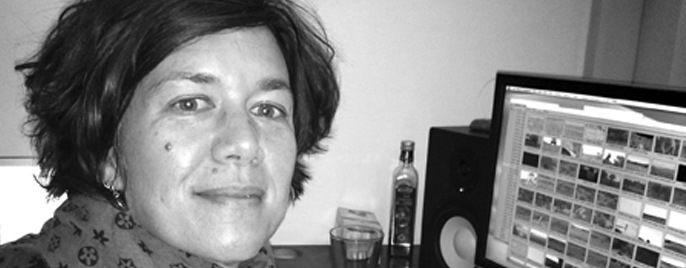What attracted you to Australia The Time Traveller's Guide?
Any excuse to work on a visually stunning series with the fabulous Dr Smith with a whole host of big ideas and planetary timelines to cram into what was originally three hours of television. Innovative science series don’t come around every day and this one was hugely ambitious in scope, telling the story of our planet, right from it’s embryonic beginnings as a swirl of molten heat, through to the formation of the continents, the first breath of the biosphere, and the rise and rise of life. It was amazing to show it through the lens of the ancient geology of Australia.
The amount of pictures needed to tell a story like this was vast, there weren’t cameras back then so every moment was put together in the edit suite, and that meant we had to be creative. Particularly in the first episode, it was mainly rocks for the first couple of billion years, and I like rocks, but you know they’re not so amazingly interesting at first glance, so we use sound and quick cuts and music to get viewers hooked. And building the time travelling device, the spaceship super car that could gobble eons in a single flash, meant we cranked out the Avid time warp effect at any opportunity, and also in the end we used it where ever there was a too long pan, or a shot that was too lingering – it was a great way to just get to the point FAST.
How did you decide the style of the edit for the series?
To tell a cracking good science story, it has to look good and that means trying to find interesting ways to juxtapose shots. But also, we had hours and hours of the most fantastic footage, just really beautiful shots of leaves, rocks, fossils, shadows, so we decided at places to use them as super quick cuts, single frame cuts, 5 frame cuts, 5 seconds of madness, as transitions, originally it was cut faster than it ended up being in the final version, we just didn’t want people to have a fit on the sofa.
How important is sound to the series?
The sound was the most important part of the edit, it set the scene and scope and feel of the cut, we laid most of it up as we went, it was crucial to build the pace of the film. And not just the water sound, we had all sorts of strange sounds at our fingertips to give another dimension and to carry the story. Like angry snake rattles, backward modulated booms, viscous slurps and my favourite – “evil spirits as Lucifer arrives” - which was a kind of demented asthmatic growling. I think that was for some titanic plate tectonic mountain building scene.
The composer was available to you during the edit. How did this help shape the cut?
Music informs the cut and Pete Drummond the composer was brilliant, hugely collaborative and able to dash together a piece when we needed it. We had access to his back catalogue as a guide because this was the kind of series that couldn’t be cut silent, often the pictures would change over and over because Richard would get very specific about what exactly the kind of leaves for example were growing in a particular time period – you couldn’t just use any old serrated edge. So often the visuals would be just holding patterns, but they would be built on carefully thought out layers of sound and music and when we didn’t have the right music we were able to chat to the composer describe the scene, the feel of what we were after and the music would shortly arrive. It was invaluable.
What was your favourite experience on the series?
I have two – the first time I saw the jaw dropping aerials over the Blue Mountains, shot at the edge of the day, huge dark clouds washing over the cliffs with streaks of sunlight, and the helicopter just skimming over the rim of the canyons. Just eye boggling. And the other – being introduced to Lile’s bottle of honey vodka late on night after the end of a long long edit.
